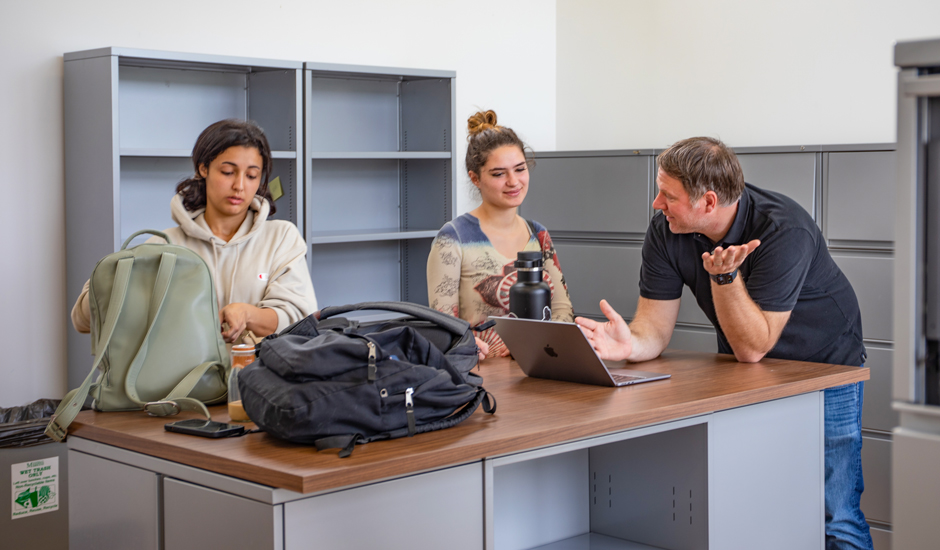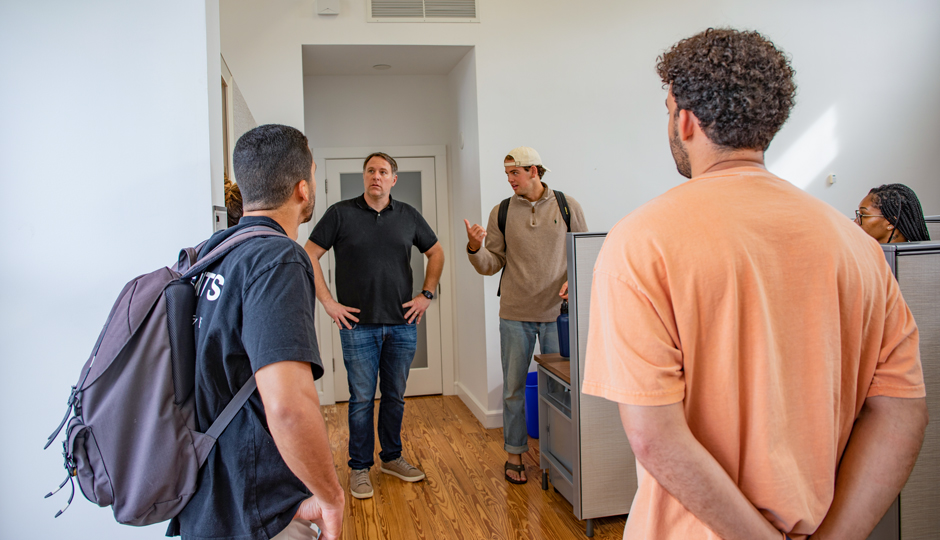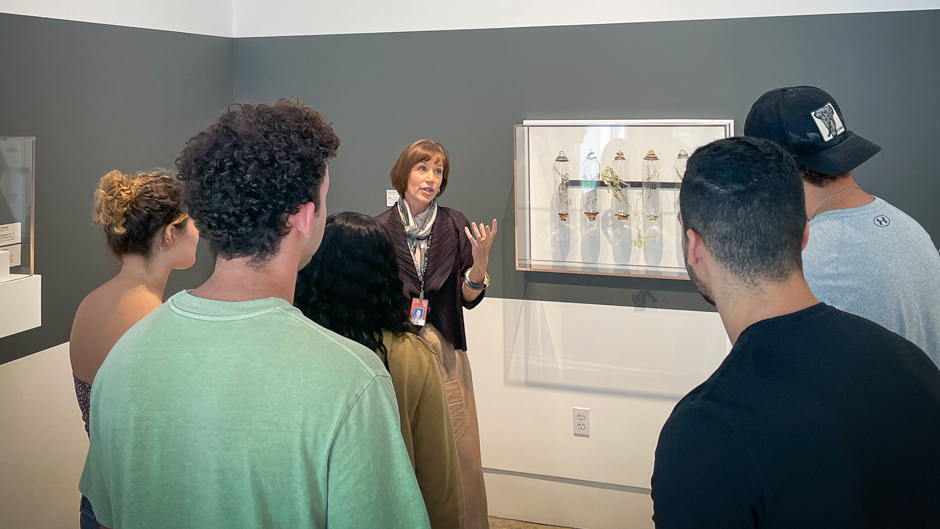When Jake Bevis signed up for a brand-new class this semester, he wasn’t sure what he was getting into. Yet several weeks in, Bevis is glad he took a chance.
“It’s one of the most unique classes I’ve taken,” said Bevis, who is studying marketing and advertising at the University of Miami School of Communication.
Bevis is one of seven students in the course called Design Thinking for Innovation and Society, taught and developed by writing studies chair and associate professor, Ben Lauren in the College of Arts and Sciences. Open to students from all undergraduate majors, it aims to teach them about design thinking, a strategy used by professionals and businesses today to solve complex problems. It’s also a method that Lauren has learned, used, and taught for years as a technical writer and communicator.
“At first I didn’t think it fit in with my major, but now I’ve realized that design thinking applies to anything, and it’s just a different approach to solving things,” said Bevis. “The ideas can apply to any field.”
Lauren and other leaders at the University are now hoping that more students will recognize the advantage of this expertise. The novel class is part of a new 24-credit innovation and society co-major offered through the College of Arts and Sciences, which will be available to students starting in the fall of 2024. A co-major can supplement any primary undergraduate major in any other school or college at the University, and it’s a unique concept. The only other co-major offered at the University is global business, available at the Miami Herbert Business School.
“Whether they are a chemistry, communications, or a computer science major, and so on, the co-major will give students an additional specialization in design thinking,” Lauren said. “You’ll get training in how to use your primary degree for the purposes of innovation and learn how to collaborate and creatively address global problems like climate change, food security, or others. This could mean the team creates a product, a new technology, or perhaps, they come up with the creative use of an existing technology.”

Design thinking was used to create companies like UberEats and Airbnb, but ultimately, it’s a creative approach for tackling global problems in a human-centered way, Lauren said. It helps groups of people whittle down different ideas to create successful inventions. But it does so by compelling teams to follow certain intellectual moves. These include researching the topic, defining the problem, brainstorming solutions, gathering feedback from stakeholders, coming up with a prototype and testing it for potential revisions. It is used widely in user experience, business, technology, and engineering now, but is often taught in the workplace, so through the program, University leaders are hoping to get students acquainted early.
“The creative thinking we learn in this [class] is what CEOs want in new hires today,” Lauren added.
The new co-major will also help the University prepare students for the complex global challenges that they may encounter in the future, which will likely require teams from a range of fields or disciplines to work together on new solutions. It will also help them to make decisions based on information gleaned from a variety of sources. To do this, students need to be able to easily navigate data, so the co-major will also require students to take a data science course.
“The new innovation and society co-major will teach students design-thinking approaches that will give them a competitive edge in any career, enabling them to drive innovation and address global challenges,” said Leonidas Bachas, dean of the College of Arts and Sciences. “Through this program, students can develop valuable skills, including creative thinking, interdisciplinary collaboration, and how to use data to solve problems.”
First-year student Presley Zemberi said her mother has been talking about design thinking for years as a health care robotics executive, and she is glad to finally understand the concept.
“It’s interesting to see how design thinking can be involved in so many settings and in jobs that you typically wouldn’t think are creative,” said Zemberi, an English major who hopes to go to law school. “Design thinking can also put you in the shoes of the people who might use a given solution, and help you understand their perspective in a more creative way, so it’s great for anyone who is interested in more innovative work in the future.”
As part of the class, students have mapped some of the campus and are redesigning a former office space in the Campo Sano Building into a learning space for the co-major. They are also creating a game-likeexperience to engage people with the Lowe Art Museum in new ways.
To complete the challenges, students typically start on their own, but they will eventually merge their ideas as one team, Lauren explained, as he talked them through some of the steps during their first visit to the future learning space.

Most students, like Jasmine Limena, were already thinking about the possibilities. Limena, a senior studying marine affairs and English literature, took the class as an elective, but is enjoying the chance to design a new space on campus, and to collaborate and discuss new ideas with her classmates.
“I have learned quite a lot about the digital side of design thinking,” she said. “There are so many applications and tools that one can use to express ideas to a variety of people in different ways. If it were not for this class, I would not have been exposed to these programs. We have learned many ways of sharing our ideas to see what works for the whole team.”
To learn more about the new co-major, contact Lauren at blauren@miami.edu.

